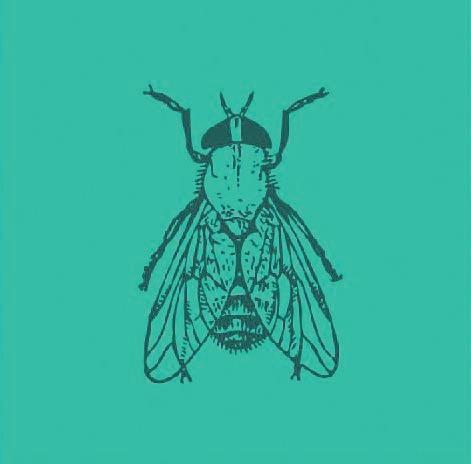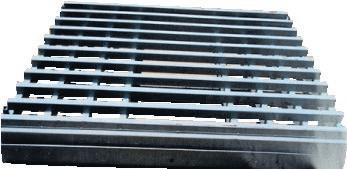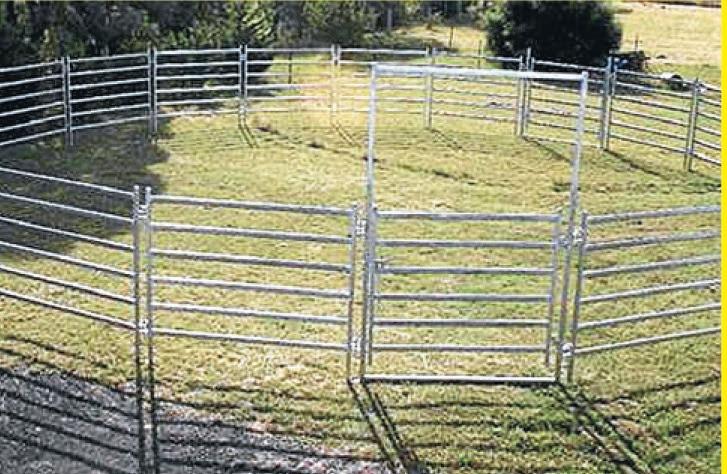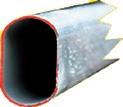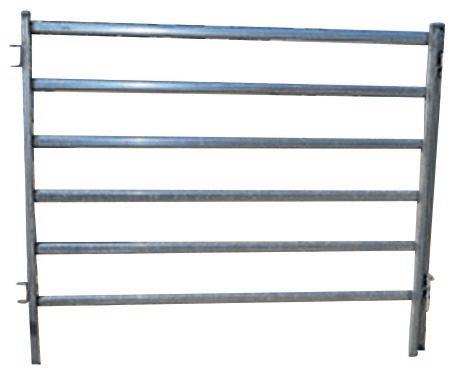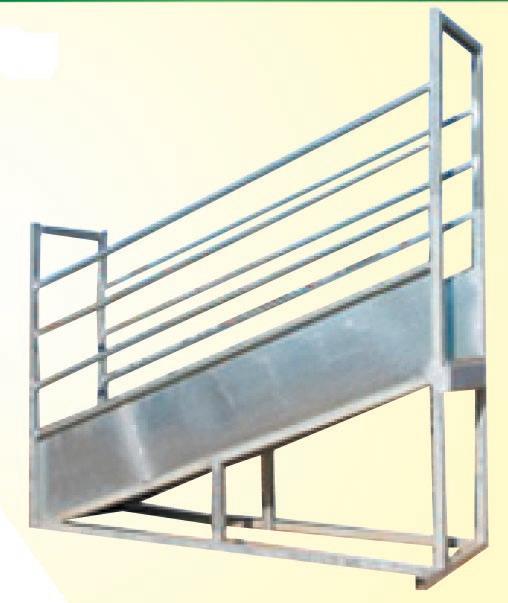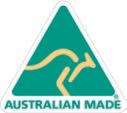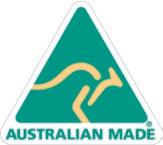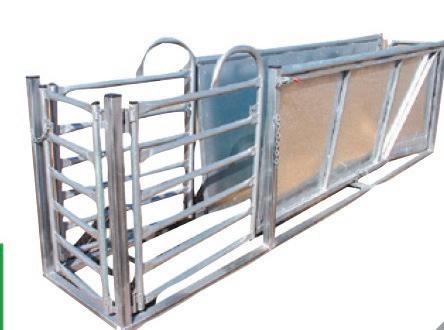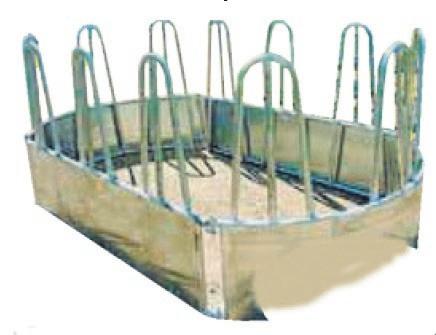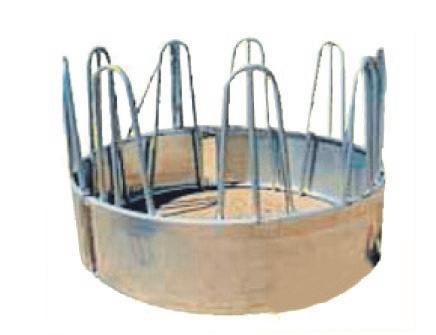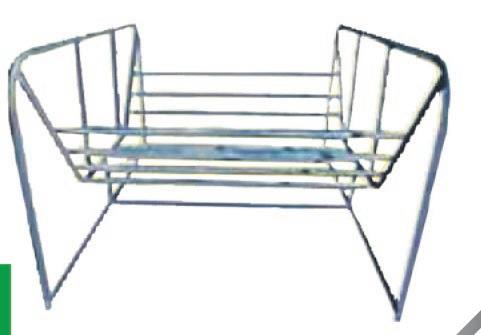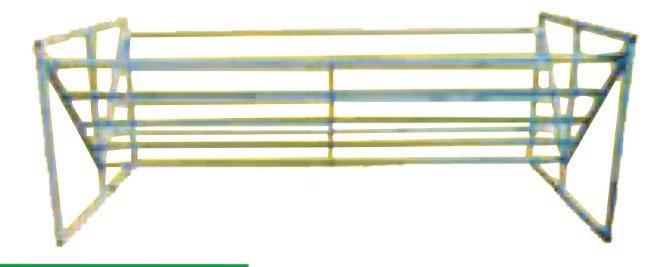














November Edition:
28, 2022
December/January
25, 2022
February Edition: January 27, 2023
March Edition: February 24, 2023
April Edition: March 24, 2023
May Edition: April 28, 2023
June Edition: May 26, 2023
July Edition: June 23, 2023
August Edition: July 28, 2023
September Edition: August 25, 2023
October Edition: September 22, 2023
The National Skills Commission’s Skills Priority List showed a “significant tightening in the Australian labour market”, with the lowest unemployment rate in decades, and shortages were facing most parts of the agriculture industry.


NSW Farmers workplace relations chair and Barooga farmer Chris Stillard said a growing population – both in Australia and abroad – meant a growing need for food, and therefore a growing need for workers.

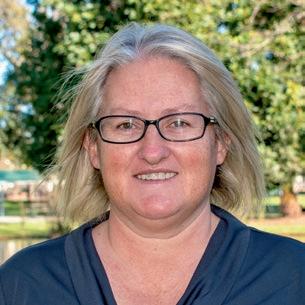


But he said there was also a need for government to better understand the important role agriculture plays.
roles, because there are great jobs with great wages just waiting to be done.”
While some still think of agriculture as farmers driving around in tractors and milking cows by hand, Mr Stillard said the reality of modern primary production meant there were job opportunities from IT to engineering, applied sciences and working with animals.
Once you took in the opportunities for value-adding and food processing, he said there were entire regional industries just waiting to take off.
“We saw a recent study that said four out of five primary school students think cows are still milked by hand, and that couldn’t be further from the truth,” Mr Stillard said.
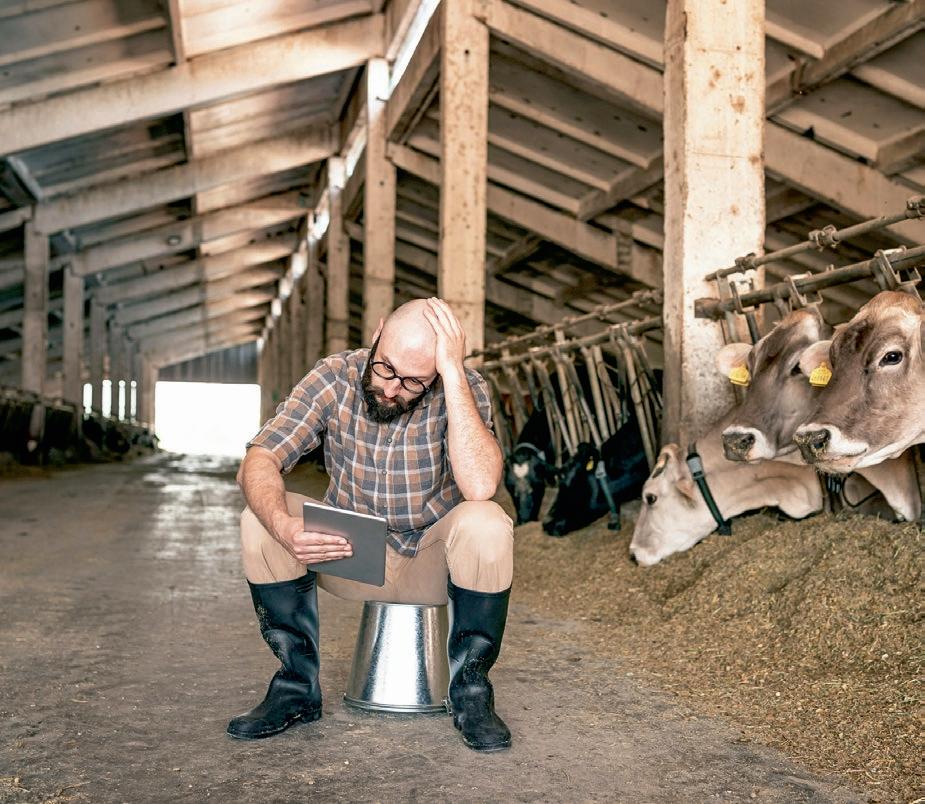
“Modern agriculture is a really diverse industry and we don’t just have tractor drivers and stockhands any more, we’ve got mechanics and drone pilots and network engineers as well.”
He said people needed to eat and agriculture was where that food came from, so for future generations of Aussie workers they could be outstanding in any field while they were out standing in a field.
CHRIS STILLARD“Everyone you talk to in agriculture either needs workers or knows someone who does, and that’s not going to get better unless we take direct action,” Mr Stillard said.
“The immediate solution is to make Australia a destination of choice for overseas workers who can fill those roles now, either short-term backpackers or medium term visa holders.
“Long-term, we need to look at designing suitable programs to develop the skills of Australians to fill these
Information contained in this magazine is presented only after being carefully researched. However, there are differences in state and regional regulations and conditions. Farmers are asked to check with their own advisors. FARMtalk can assume no responsibility for the contents.
A government report has revealed widespread skills shortages across the agriculture sector, prompting fresh calls to secure workers.
“Everyone you talk to in agriculture either needs workers or knows someone who does, and that’s not going to get better unless we take direct action.”
Planting of the 2023 calendar year rice crop is traditionally due to begin this month, but with the constant wet weather experienced during the first fortnight of October, many growers are having a delayed start to the season.
Others, however, have been able to get their seed in the ground and make the most of breaks in the rain.
In the current wet conditions, rice is once again demonstrating its resilience and suitability to the variable seasonal conditions experienced in the Riverina.
SunRice Group Chairman Laurie Arthur said, “As we look ahead to planting for the CY23 Riverina crop, conditions are favourable”.

“Water availability and water pricing ($10/ML in the Murray Valley) are at ideal levels for rice production and should underpin another large crop.
“The SunRice Group is offering both fixed price contracts for limited volumes of particular varieties, and a pool for the CY23 crop, which will be planted from October 2022.
“We’ve received consistent feedback from growers that they value both fixed price contracts and a pool, and we’re pleased to once again provide both options for the upcoming season.”
Seed orders for the coming planting season have also opened.
Below are the prices for particular varieties in the fixed price contract offer:
Reiziq $420/mt
VO71 $420/mt
Sherpa $420/mt
V071 is again being offered to growers, alongside Reiziq, and Sherpa is being offered at the same price in the fixed price contract offer, whereas last year it had a discount to base medium grain Reiziq.
The SunRice Group has identified strong market demand for Sherpa, particularly given the drought in key Northern Hemisphere supply countries, and is seeking increased volumes to meet that demand.


CY22 was the first year in which V071 was grown at commercial levels with outstanding results.
Hopefully this will be repeated under conditions presented to growers in the coming season.
Reiziq, our proven bold medium grain variety, will continue to be available this season, along with Viand.
Below are the premiums to base medium grain which will also be offered for specialty varieties in the CY23 pool:
VO71/Viand/Sherpa Flat
Opus +$20/mt
Langi +$75/mt
Topaz +$110/mt
Koshihikari +$165/mt
The SunRice Group is unable to disclose an estimated range for the pool at this stage, given the ongoing uncertainty in global markets, specifically related to such factors as foreign exchange rates, world rice prices, conditions in end markets and ongoing disruption and volatility in global shipping and supply chains.
It will continue to monitor these factors and provide an estimated range to growers when practicable.
Processing and marketing of the crop is due to run from May 1, 2023 to April 30, 2024.
In 2014, she became the ‘LEGO farmer’ who created amusing photos of little brick men working on the farm. Now she’s off overseas and hopes to include a visit to the home of LEGO in Denmark.

“Currently agriculture education in schools relies on teacher knowledge and access to resources often funded by individual industries, yet research shows that if experiences are further provided, knowledge is more powerful and meaningful.”
AIMEE SNOWDENAimee Snowden was recently made a Nuffield Scholar, and the former Tocumwal farmer is now planning international study trips for next year to advance her knowledge and understanding of education in agriculture.
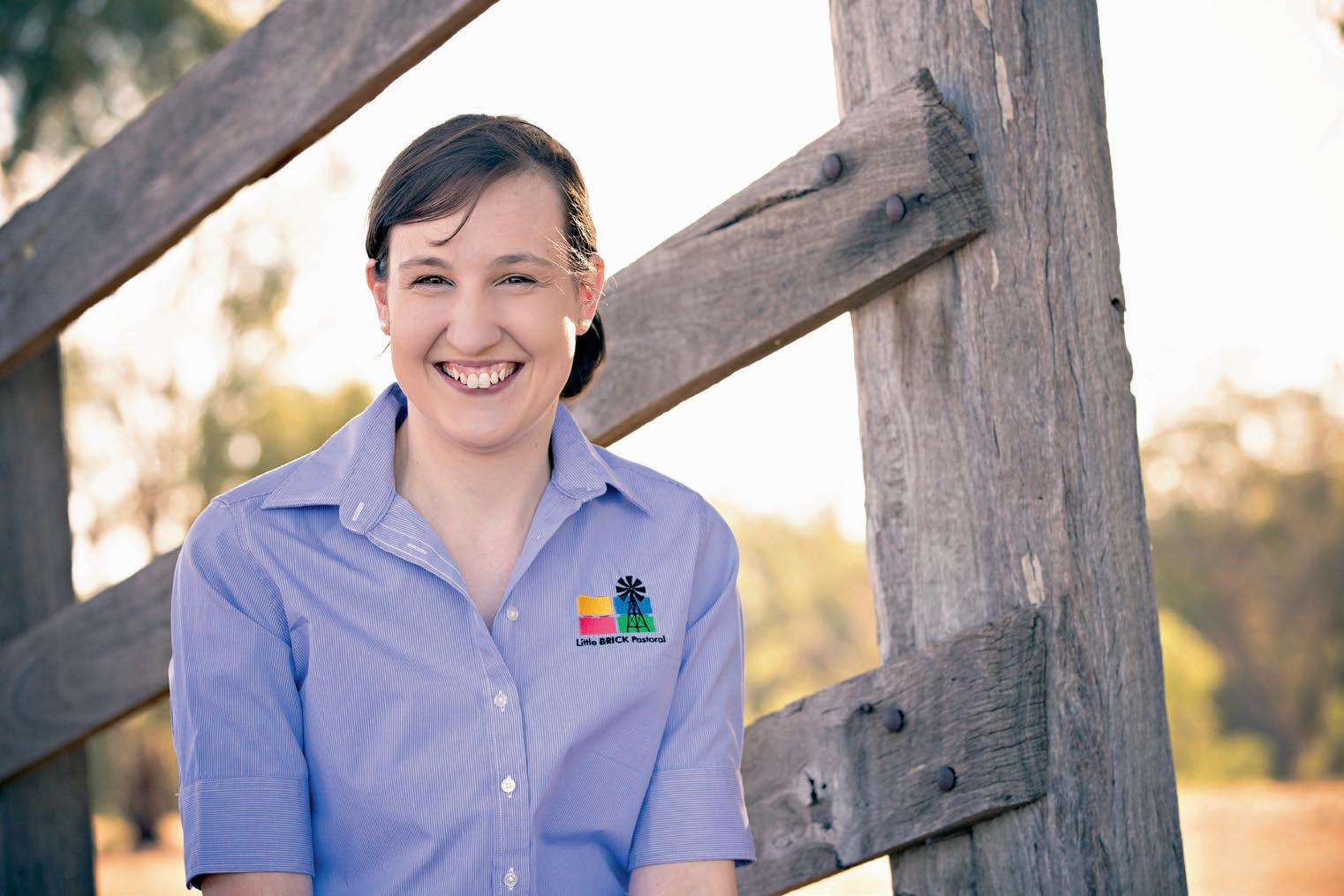
She began photographing tiny LEGO figures on the Tocumwal mixed farm of her parents in 2014 in a bid to raise the profile of farming, and this novel approach eventually propelled her into the world of agricultural education.


She established Little Brick Pastoral website, where she publishes the antics of her little farmers, and now hopes to include a visit to the home of LEGO on one of her European study trips in 2023.
The daughter of Phil and Lynda Snowden of Tocumwal, Ms Snowden attended Finley High School, which has a significant agricultural program in the curriculum — something she said was unfortunately rare in state education.
Ms Snowden said while programs in some schools were excellent, too many relied on local support and very dedicated staff who took a personal interest in the course.
“When they move on, there is a danger that the program can wind down,” she said.
Ms Snowden worked in agriculture education programs and initiatives in north-east Victoria with Charles Sturt University, and on South Australia’s Yorke Peninsula.
More recently she has worked at the Central Queensland University in Rockhampton.
Her playful photos have attracted a wide audience, and it propelled Ms Snowden to be engaged in developing agricultural education programs, resources and events.
She proposes to study agriculture education models that drive immersive experiences and engage curious minds.
“Currently agriculture education in schools relies on teacher knowledge and access to resources often funded by individual industries, yet research shows that if experiences are further provided, knowledge is more powerful and meaningful,” she said.
“An opportunity exists for more engaging experiences for students and teachers showcasing ag-tech and modern farming practices and removing industry silos.
“We have a vast array of industry bodies, RDCs and member organisations, with many developing education resources.
JODIE REDCLIFFE“However, we need an all-encompassing ag education experience that allows students to learn about Australian agriculture as one industry in a hands-on manner, and thereby consider a future where they can enjoy a prosperous and meaningful career.”
Traditionally students considering a future in agriculture had faced three perceived options — doing a Bachelor of Agriculture when they were going back onto the farm, doing agricultural science and becoming an agronomist or doing agricultural finance and going into banking.
Ms Snowden believes there is more to agriculture, and education should offer a greater number of pathways.
She is the first to acknowledge she has more questions than answers.
“That’s why I’m going with Nuffield — I hope to find some answers.”
The Nuffield Scholars will travel in Australia and overseas to study innovative ideas, techniques and systems that will benefit their businesses and the broader agricultural industry.
Each 2023 scholar receives a $30,000 bursary to invest in travel and research.
They will visit, learn from and collaborate with some of the world’s leading agricultural businesses and research institutions.
Nuffield Australia chief executive officer and 2013 Scholar, Jodie Redcliffe, said the scholarships enabled producers to learn about farming systems and innovations that can be game-changers for Australian agriculture.
“Nuffield Australia opens the world up for people in agriculture who are brave enough to be out of their comfort zone,” Ms Redcliffe said.
“A global perspective enables them to learn, be competitive and grow.”
“Nuffield Australia opens the world up for people in agriculture who are brave enough to be out of their comfort zone.”



With the prediction of above average rainfall for spring and summer this year, you should be on the look out for signs of lumpy wool (also known as dermo), fleece rot and/or flystrike in your flock.
Although these are all conditions that affect the skin and wool of sheep, there are differences when it comes to the prevention and control of these diseases.
So, it is important to understand what to look for and how to manage each condition.
What is it caused by?
While flystrike may occur independently, provided there is moisture in the fleece, fleece rot and lumpy wool can predispose sheep to flystrike. These conditions:
• Attract pregnant blowflies and encourages them to lay eggs;
• A bacterial infection (most commonly Pseudomonas aeruginosa) of the skin
• Develops following prolonged wetting of the fleece and skin (usually 5-7 days)
• A bacterial infection (Dermatophilus congolensis) of the skin that causes scab formation
• Provides moisture for eggs to hatch; and
• Provides protein for blowfly larvae to feed on.
The table below goes through the differences between fleece rot, lumpy wool and flystrike and provides information on control and treatment.
• The Australian sheep blowfly (Lucilia cuprina) causes over 90 percent of all flystrike in Australian flocks
• Warm and moist conditions favour activity of blowflies and flystrike occurring
What does it look like?
• The wool near the skin becomes crusted, matted, and often results in green staining of the wool
• Forms columns of hard lumps along the wool staple
• In non-wool areas, such as the face and ears, the scabs are generally less than 1cm in diameter
• Scabs are more significant on wooled areas and advanced cases have hard lumps or plates of scabs across their back
• The scabs lift from the skin with the fleece as it grows, causing the characteristic lumpy wool appearance
• Pulled or discoloured wool, maggots are visible
• There are various types of flystrike including: Breech strike that takes place around the crutch area of the sheep; Body strike; Wound strike; Pizzle strike; Poll strike
How is it spread?
What sheep are most susceptible?
• While some sheep can be more susceptible, fleece rot is not infectious (i.e. does not spread from one sheep to another)
• Sheep that have poor conformation along their backline such as having a dip between or behind the shoulder blades where the fleece cannot dry out
• Sheep with a fleece type that lets the water in and dries out slowly
• Can spread between sheep when infected sheep become wet and have physical contact with noninfected sheep
• Mainly occurs in weaners or hoggets, especially those with a fleece type that wets easily
• Young lambs less than six weeks of age are susceptible to lumpy wool due to the low protective wax content of their wool
• Individual sheep are infected when blowflies lay egg in moist wool. Once hatched, maggots then feed off damaged skin
• All breeds of sheep are vulnerable to flystrike during wet seasons
• Fleece rot and lumpy wool are predisposing factors for flystrike
• Urine or faecal stained wool, skin wounds, tissue damage such as footrot, weeping eyes, sweat around the base of the horns in rams can all cause increased moisture, making sheep susceptible to flystrike
from
P: 03 5881 2322 E: farmtalk@denipt.com.au
P: 03 5881 2322 E: farmtalk@denipt.com.au
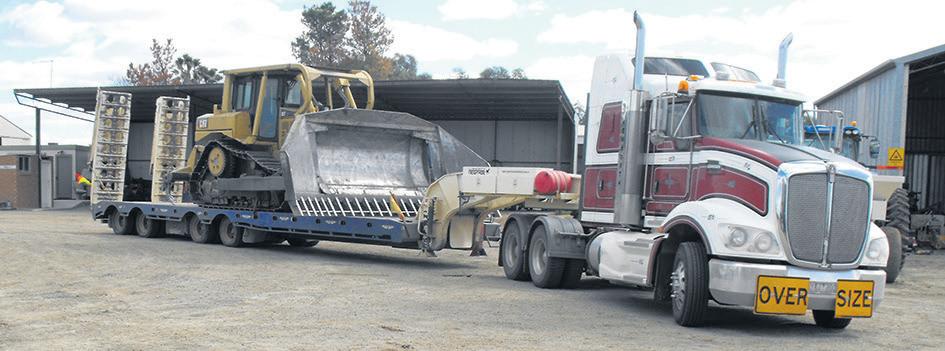

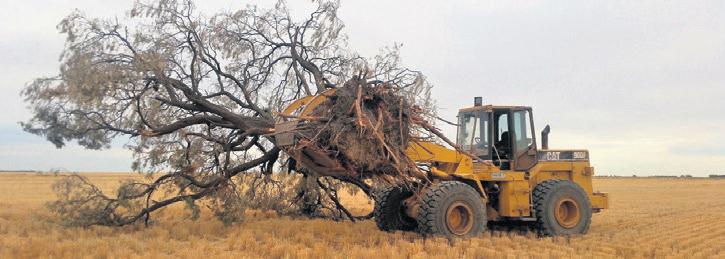
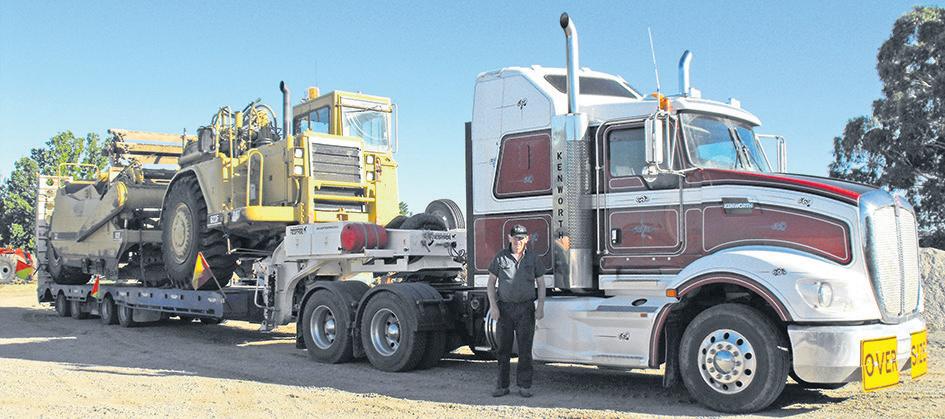
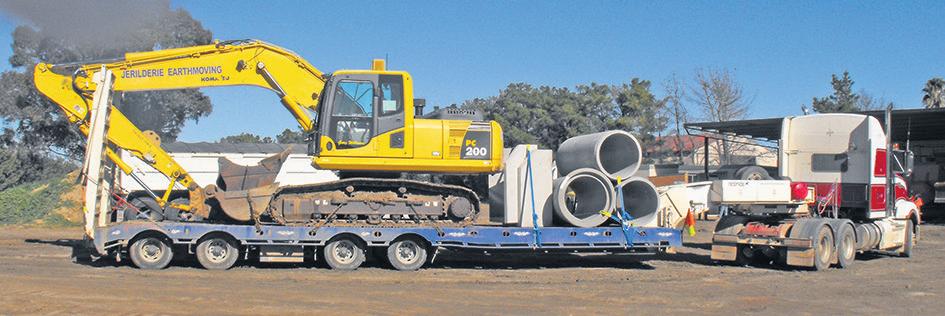
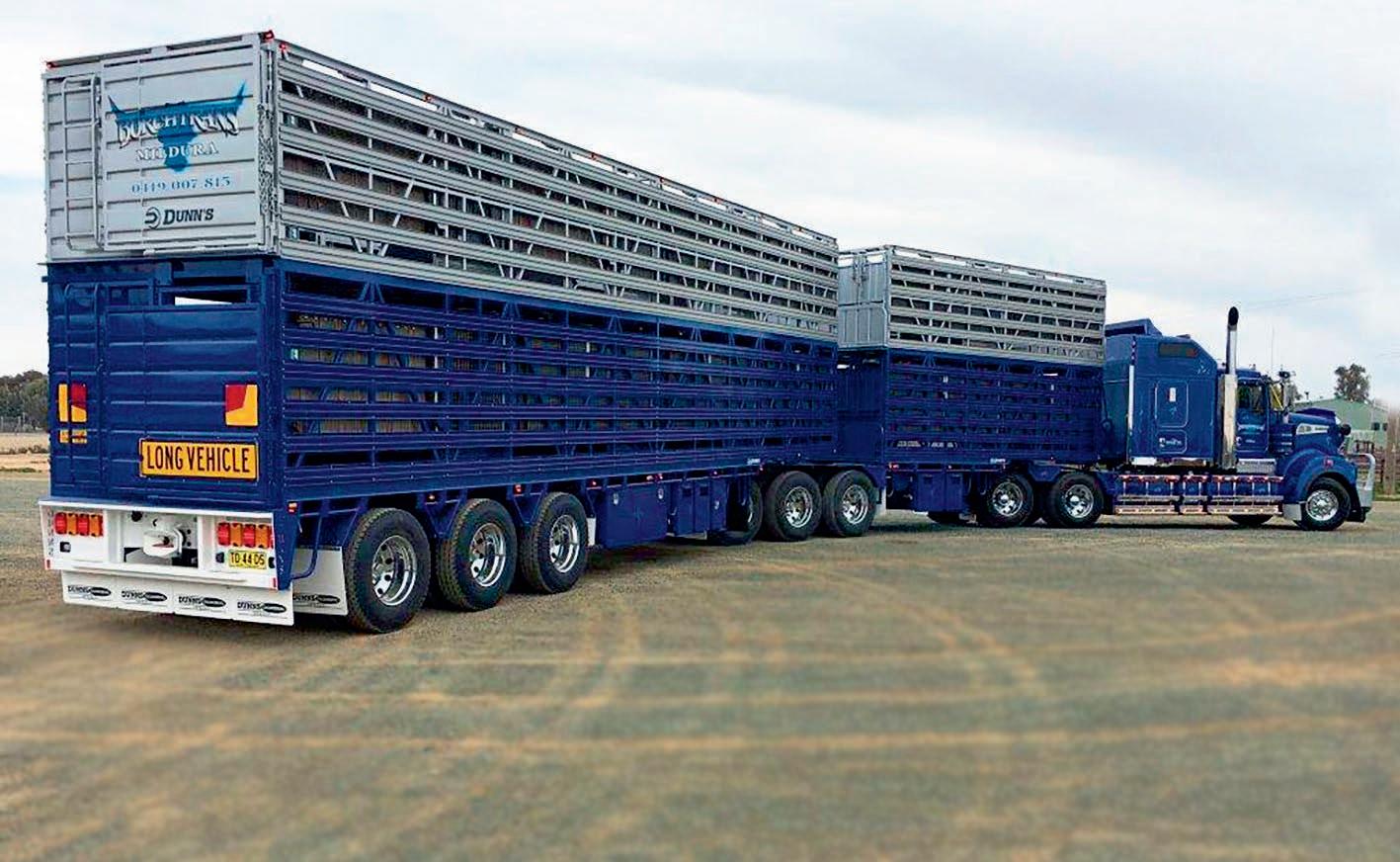





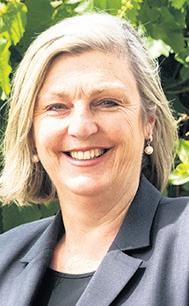


What is the effect of the condition?

How do you treat it?
• Reduction in wool quality, stained wool that is unscourable

• Increased risk of flystrike
• There is no effective treatment available for fleece rot
• Usually resolves spontaneously once the wool and skin dry out
• Once resolved at the skin level, as the wool grows it moves away from the skin but the fleece will remain stained until removed at shearing
• Loss of condition and deaths in affected mobs
• Reduced skin and wool value
• Increased risk of flystrike

• Can lead to fleece rot
• Most sheep will develop immunity to lumpy wool infection and in most instances the active skin infection heals within four to six weeks
• In severe cases, sheep can be treated with antibiotics
• Cull chronically infected sheep due to their ongoing susceptibility to flystrike
• Select directly for fleece rot resistance
Shearing lambs at less than five months of age can result in a higher incidence of fleece rot compared to if the first shearing is delayed until approximately 12-15 months of age; Shear immediately before the start of the rainy season as a short fleece dries quickly and rarely becomes affected by fleece rot; and Otherwise, older sheep require at least three months after shearing for their fleece staple structure to form an effective barrier to rain
• Limit physical contact between wet sheep and don’t yard wet sheep
• Shear and dip young sheep first, before the area becomes contaminated from older sheep which may be carriers of the disease
• Shear or dip infected sheep last
• Use of commercially available dip additives (such as 0.5 percent zinc sulphate solution) may act as a preventative
• Treatment is essential. If struck sheep are left untreated death can occur
• The struck area should be clipped with wide margins, allowing the skin to dry out and expose maggot trails
• The wool and maggots should be placed in a black plastic bag and left in the sun to kill the maggots
• The struck area should be dressed thoroughly with an appropriate registered flystrike treatment
• There are a range on insecticides available for the prevention and treatment of flystrike. Rotation of the use of these chemicals is important in reducing resistance
• Worm control to minimise scouring and dags, reducing the risk of breech strike
• Shearing and crutching can provide up to six weeks protection for strike
• If you have ongoing issues with flystrike, consider culling for strike, high wrinkle and/ or fleece rot scores as part of a wider genetic selection strategy for long term prevention
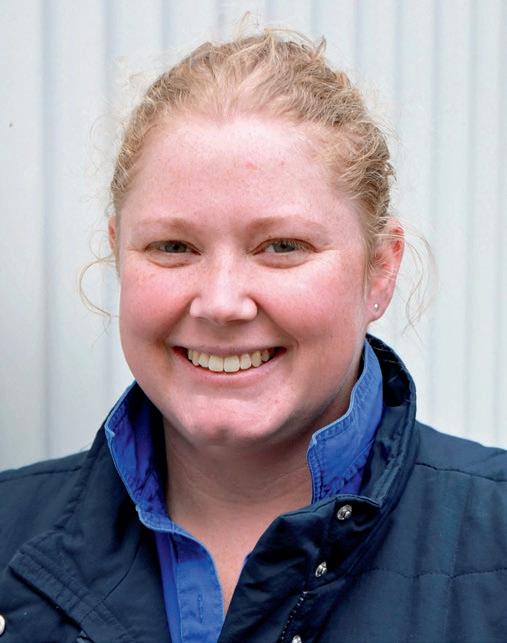
Katelyn Braine (pictured) is a district veterinarian with Murray Local Land Services.
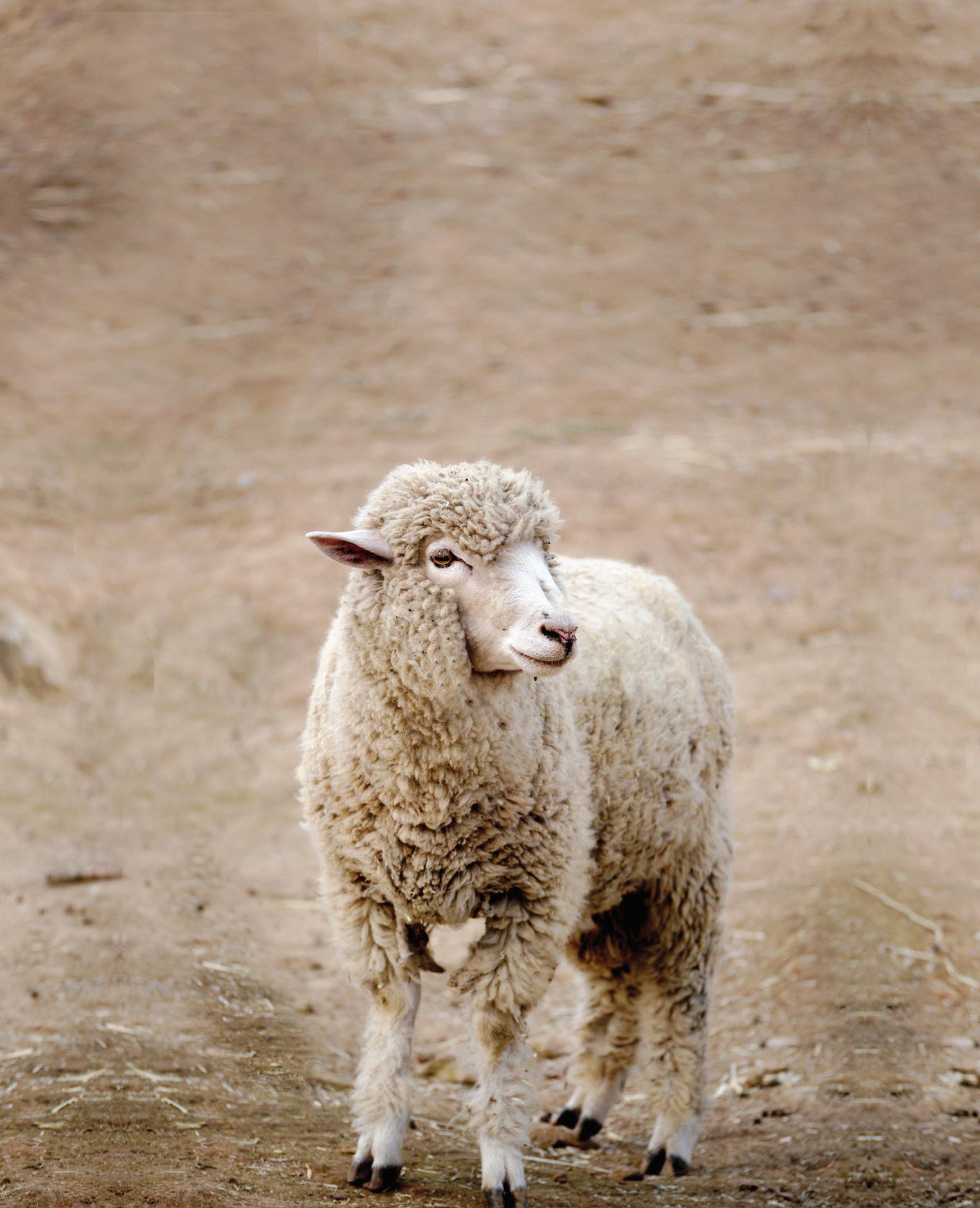



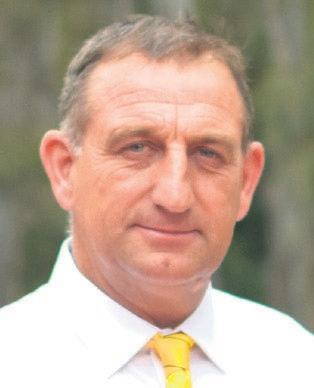






for Fusarium Head Blight.
Mother nature has a habit of keeping us grounded and making sure we don’t get too far ahead of ourselves.
While we are enjoying a tremendous season, a disease not often seen in our part of the world has popped up which could have some serious implications for producers (in particular those with barley or wheat crops).
Fusarium Head Blight (FHB) is a serious disease of wheat and barley in many areas of the world, including Australia. Moist and warm weather (ie. >80 percent humidity) during flowering and early grain filling favour infection, resulting in significant losses in grain yield and quality. These conditions have obviously been more prevalent this year. Some varieties are more susceptible to infection than others – in particular durum wheat varieties.
FHB is caused by several species of the Fusarium fungus – in particular Fusarium graminearum which is the dominant species that occurs when winter cereals are grown in close rotation with maize. However, in wet seasons such as we are experiencing at the moment, basal Fusarium crown rot infections from F. pseudograminearum can also result in FHB infection when spores produced around infected lower nodes ‘rain splash’ into heads during flowering.
Typically, the first signs of infection are seen in the developing heads – individual florets or parts of heads are often bleached white (see photo) with the rachis (stem in head) brown at the point where these bleached spikelets attach. Infections that occur around flowering result in white grains with a chalky appearance, which are shrivelled and of low weight. With continued moisture during grain filling these affected grains can also develop a pink discoloration.
Yield losses result from sterility of the florets (flowers) and from formation of shrivelled, lightweight grain. FHB can cause significant yield reductions, with reports ranging from 20 percent up to 100 percent yield losses when seen previously with significant reductions in grain quality.
Anecdotally, there are reports that some producers are considering trying to salvage some returns from FHB infected crops by turning them into silage or hay.
Economically this is a sensible response. However, there is a significantly higher risk that crops infected with FHB may also be infected with mycotoxins, and other secondary metabolites. These mycotoxins (basically toxins produced by the causal fungus) can
have significant impacts on livestock, both ruminants (sheep, cattle etc) and monogastrics (horses, pigs, etc.) that consume infected feed, including:
• Impacts on the liver, kidney and brain;
• Reproductive failure and abortions;
• Reduced feed intake;
• Gastro-intestinal upsets;
• Lower immunity;
• Reduced animal performance;
• Death
Feeds can be tested for the presence of fungi (and moulds - which are generally quite affordable) but should also be tested to determine the type of fungi (or mould) to help identify the potential risks. These tests are more expensive.
The actual type of mycotoxin(s) present can be determined through the use of ELISA (enzyme-linked immunosorbent assay) testing – such testing requires specialist laboratory services and needs to be done prior to any consumption of the feed, but still may not truly represent the entire feed supply depending on the level of infection and sampling technique.
Consult with your private or Local Land Services veterinarian to obtain the best advice if you suspect you may have an issue with mycotoxin contamination in your feed source(s).
Bottom line - be alert!
If you have (particularly) wheat or barley crops coming into maturity, regularly check for the signs of FHB. Unfortunately, because of the timing of the infection, if you are seeing these partially bleached heads, there is not a lot that can be done now to treat the infection.
Correct identification is important. There are other disorders such as Melanism (false black chaff – a physiological condition) and white grain disorder (caused by another fungi - Eutiarosporella spp.) which can look very similar to FHB, but do not produce the mycotoxins. Take some samples and obtain the correct advice.
Part of correctly identifying the disease is in trying to determine the source of the infection. That is, check stem bases for browning characteristic of Fusarium crown rot, what the paddock history has been and the like. Knowing the source of infection is important not only for diagnosing the problem, but also to future management approaches.
Source: Bayer Crop Science Australia.
It is not recommended that any grain harvested from infected crops is kept for seed – as the fungi can survive in the seed and significantly reduce establishment due to seedling blight if used for sowing.
Finally, be aware if you are considering making silage (or hay) from FHB infected crops – either for your own purposes or buying from a third party. Be aware of the potential risks of feeding conserved fodder that may have been infected by FHB. Fusarium mycotoxins can continue to accumulate in infected grain and fodder whilst the moisture content is above 14 percent.
Consult with your trusted agronomist to accurately determine whether you do have FHB present in your crop(s), the severity of the infection, and what options you have.
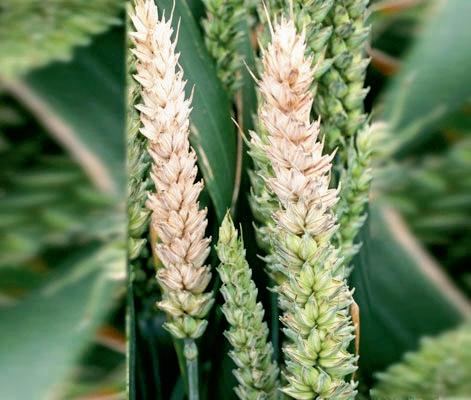
NSW DPI cereal pathologists can also assist with correct identification, testing of grain or heads for infection levels and management advice. For further advice, producers and their advisors are encouraged to contact Steven Simpfendorfer, Cereal Pathologist NSW DPI on 0439 581 672 or steven.simpfendorfer@dpi.nsw. gov.au
The contributions of Steven Simpfendorfer, Adam Dellwo (Senior Agronomist, Nutrien Ag Solutions Deniliquin) and Linda Searle (District Veterinarian, MLLS Deniliquin) in producing and reviewing this article are acknowledged and greatly appreciated.
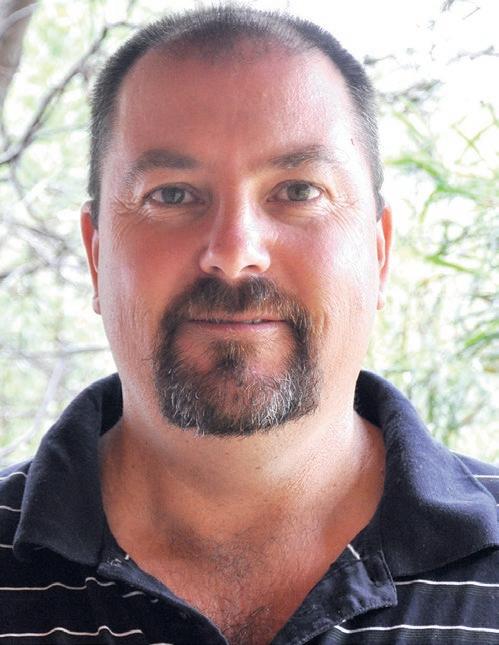 Adrian Smith (pictured) is senior lands services officer — mixed farming with Murray Local Land Services.
Adrian Smith (pictured) is senior lands services officer — mixed farming with Murray Local Land Services.

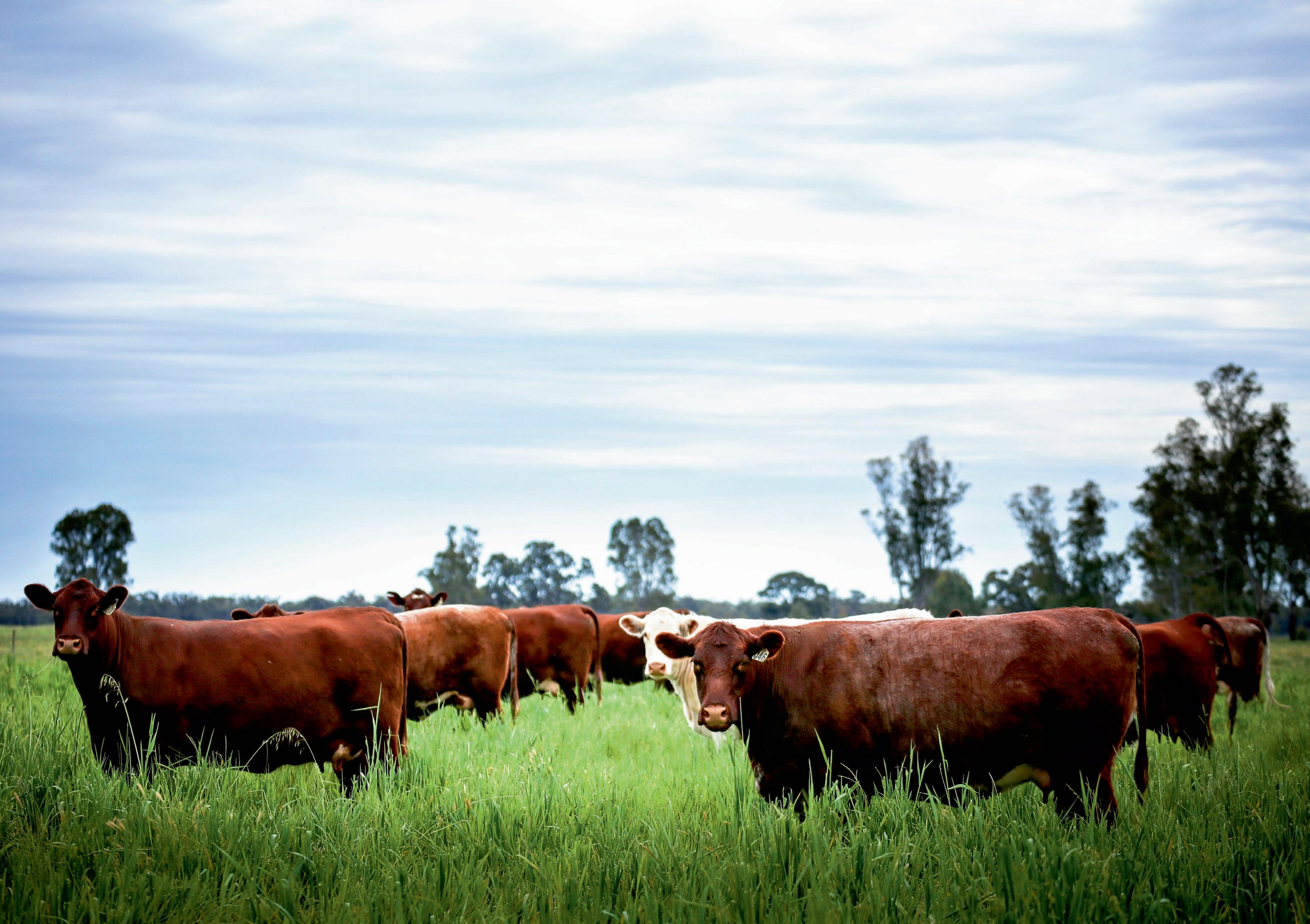 The Shorthorn breed is the premium red-coated cattle breed in Australia and local farmers Amanda and Steve Barlow are continuing the decades long family tradition with Shorthorns.
The Shorthorn breed is the premium red-coated cattle breed in Australia and local farmers Amanda and Steve Barlow are continuing the decades long family tradition with Shorthorns.
Shorthorn breeding has been in her family for decades, Amanda Barlow said, “my love for Shorthorns came from my grandfather and uncle and their association with the breed.”
Amanda and Steve’s Shorthorn journey began as a small operation with 10 heifers and a bull.
Today, ‘Toogimbie Shorthorns’ has 400 cows with additional calves and bulls.
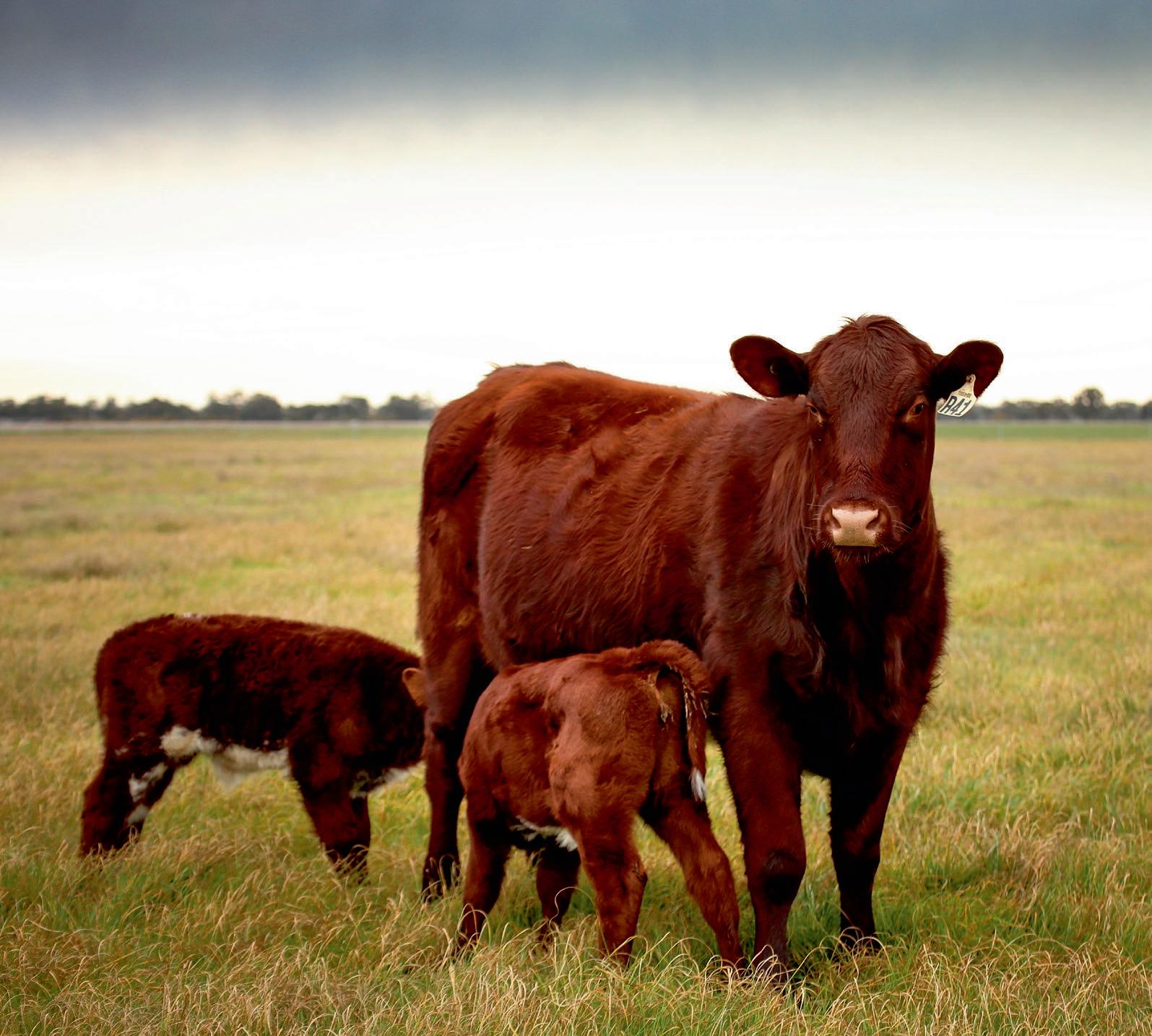
The Barlows supply the Thousand Guineas feedlot, which is a premium market.
The Thousand Guineas brand is a wholly owned JBS Australia branded beef program.
To be accepted into the program, feeder steers and heifers must be a minimum 75 percent Shorthorn content and have a marbling minimum of two.
The beef is exported to Korea and supplied to restaurants around Australia.
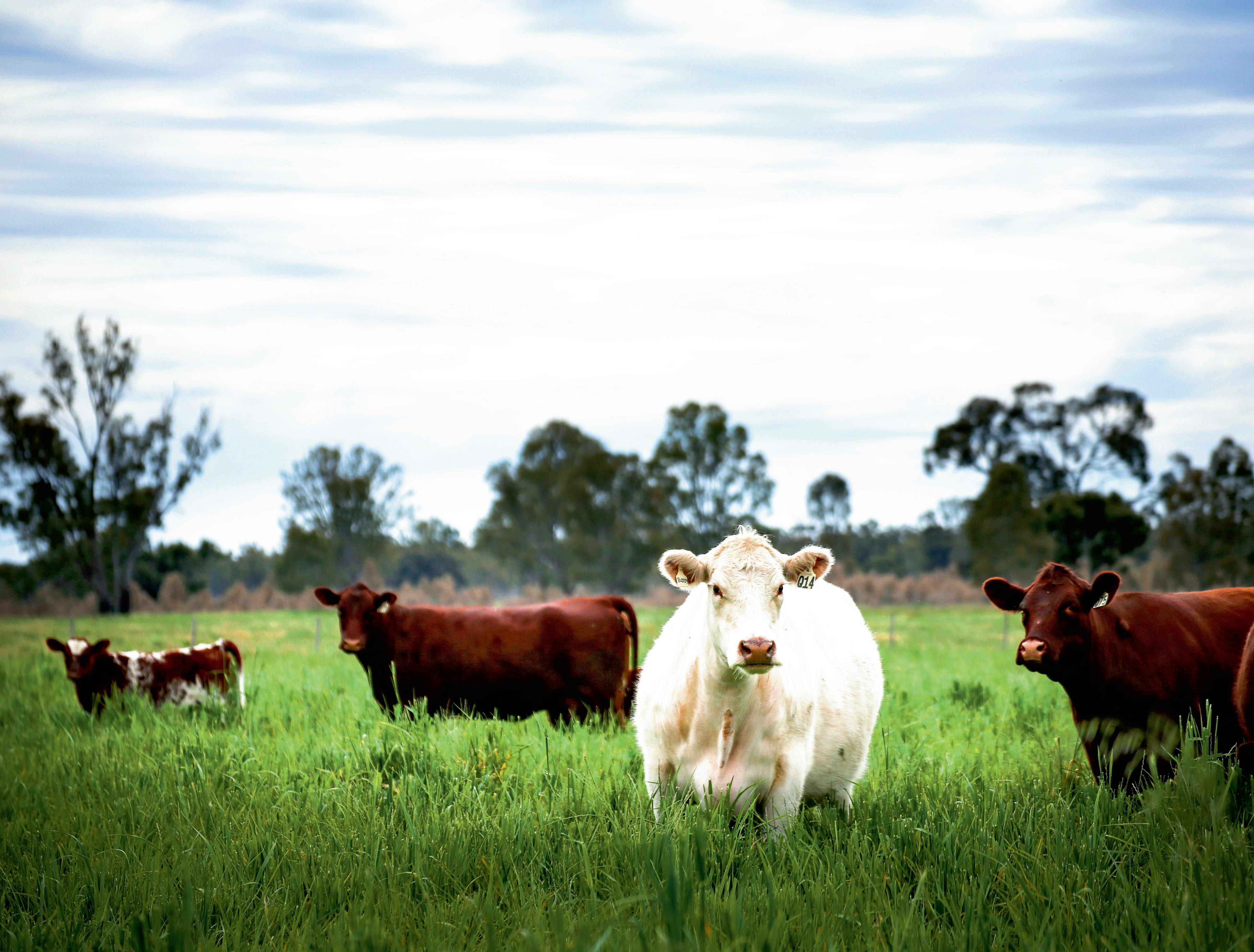
When the local saleyards are in operation the cattle from the farm are also sold there.
The farm has seasonal activity beginning with constant care and supervision provided to heifers when calving.
Later, bulls are put to re-join cows for eight weeks.
Amanda includes this as part of their breeding program saying, “It helps improve the quality of the beef and the marbling score.”
The calves, when ready, are weaned and tagged with the National Livestock Identification System tags and males are castrated, with some bulls kept.
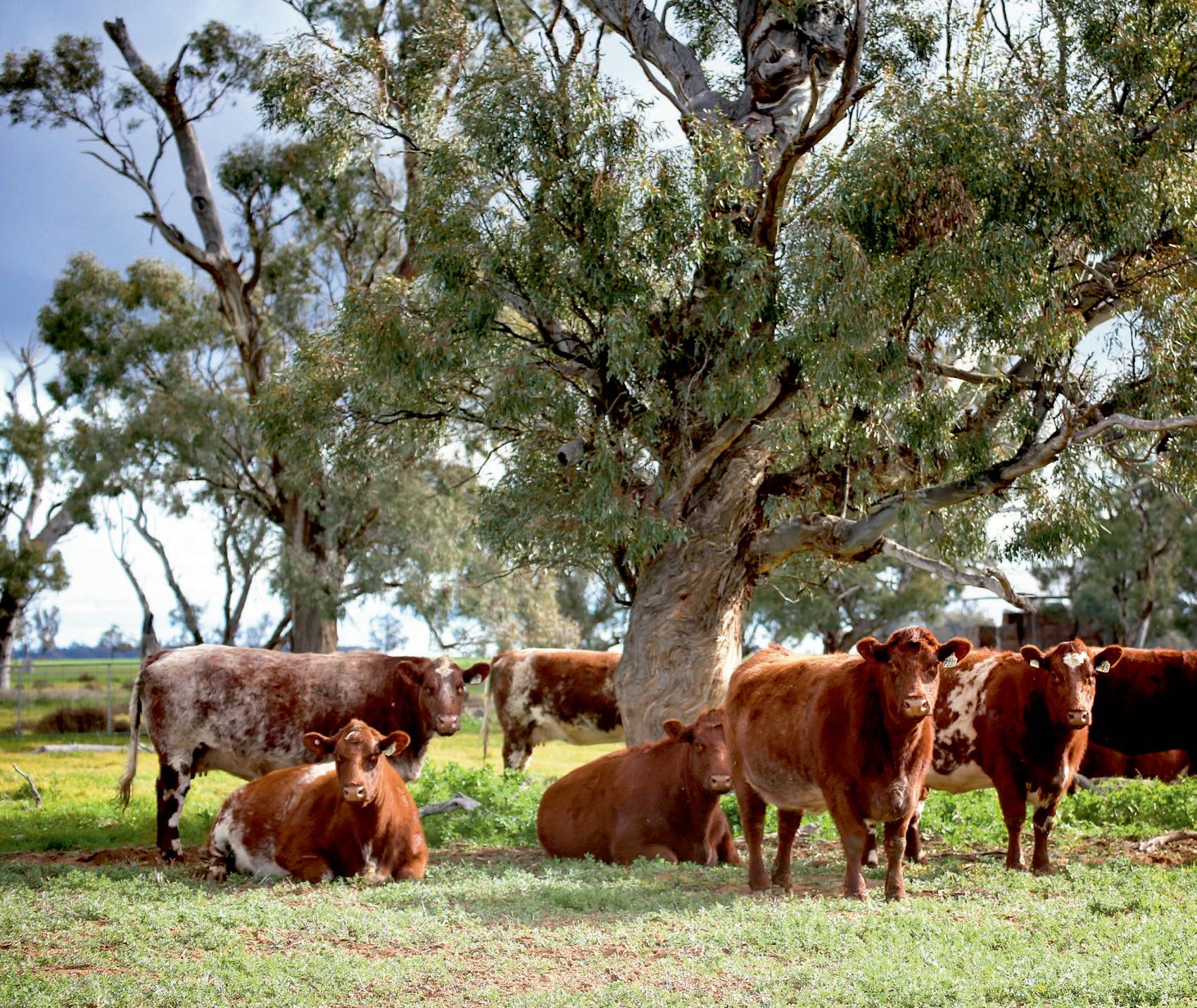
Once weaned the calves are fed appropriately until they reach a suitable maturity and the process starts again.
Amanda’s involvement with the Shorthorn breed extends beyond her farm gate.
She is also federal director of shorthorn beef with the Shorthorn Breed Association.
The Barlows have a mixed farm of cattle and cropping with barley, wheat and vetch which Amanda says have been yielding well over a number of years.
AMANDA BARLOWAn artificial insemination program started for the Barlows in early October, which involves 70 heifers and access to elite genetics sourced worldwide.
“This year was looking as the best yet, but now it’s dependent on the current flood situation,” she said.
“This year was looking as the best yet, but now it’s dependent on the current flood situation.”
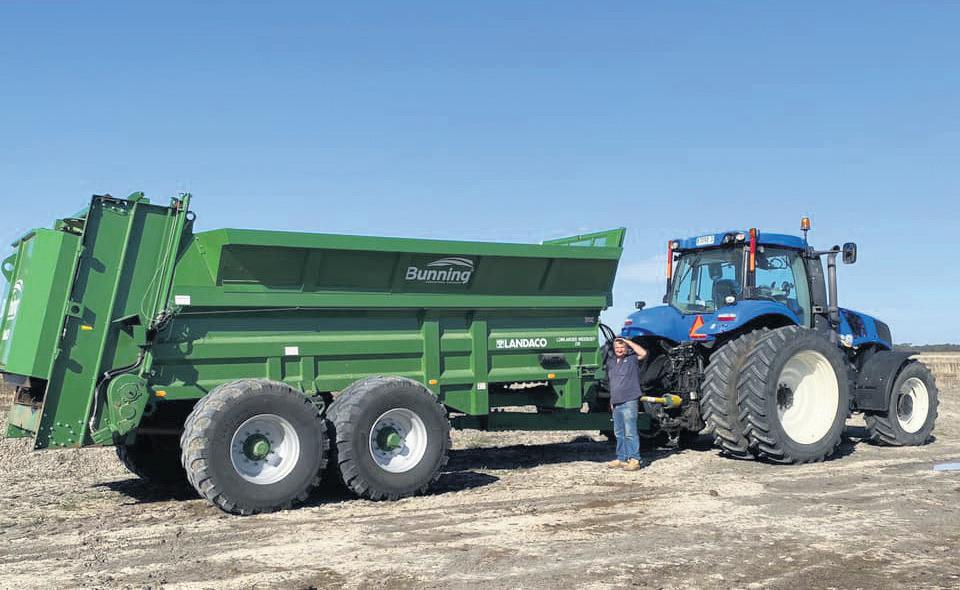
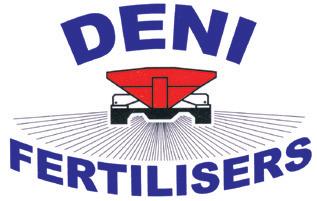





At a busy festival site on a warm spring night, A baby lies alone in her pram, her mother having vanished into the crowds. A year on, Kim Gillespie’s absence casts a long shadow as her friends and loved ones gather deep in the heart of South Australian wine country to welcome a new addition to the family. Aaron Falk, federal investigator, is joining the celebrations. But as he soaks up life in the lush valley, he begins to suspect this tight-knit group may be more fractured than it seems. As hidden truths slowly emerge, Falk faces the darkest questions.


After an election upheaval, Dominic Cochrane decides it’s time to leave his twenty-year political staffer career behind. He opts to stay at a friend’s converted waterside boatshed in a quiet bay in a Sydney backwater. The long-time neighbours take Dom into there fold, but his peaceful retreat is quickly upended as he becomes embroiled in a tragic mystery. As money sharks circle treasured family homes in the secluded community, tensions mount as their way of life is threatened, secrets are exposed and old wounds reopened Can Dom unravel what really happened so many years ago, or have the secrets been swept away on the dark night tide.
A man runs for his life in a forest.
A woman plans sabotage. A body is unearthed.
Newly-minted homicide detective Nell Buchanan returns to her hometown, annoyed at being assigned a decade-old murder—a ‘file and forget’. But this is no ordinary cold case, as the discovery of more bodies triggers a chain of escalating events in the present day. As Nell starts to join the pieces together, she begins to question how well she truly knows those closest to her. Could her own family be implicated in the crimes?
Orphan Fleur Appleby is adopted by a loving undertaker and his wife and quickly develops a special gift for helping bereaved families. Her ambition to be the first female mortician in the country is fuelled by her plan to bring more women into the maledominated funeral industry. Raised in the outback of South Australia’s Flinders Rangers, Tom Catchlove is faced with a life changing tragedy as a young boy. He works hard but dreams big,striving for a future as a awool classer. A chance encounter between the two children will change the course of their lives.

These great titles and more available instore. We post direct to you, contact us today to discuss getting your copies posted* *Postage and Handling fees apply.
Canadian milk processor Saputo is looking at rationalising its dairy factories in Australia in its implementation of a new, four-year global strategic plan.
No announcement has been made whether any Victorian dairy factories will be affected.
Company CEO Lino Saputo has announced they will be implementing an approach to networking their processing factories to achieve efficiencies, which has already been applied to Canada and the United States, where multiple factories were closed.
Saputo Dairy Australia has been facing a reduction in milk supply, which Mr Saputo confirmed in recent statements.
Earlier this year Saputo closed its cheese slice line at the Cobram factory in northern Victoria. In recent months the company has announced factory closures in the US and the transfer of one line to another factory.
In an interview broadcast by Scotiabank, a Canadianbased bank, Mr Saputo outlined how the company was implementing an approach already adopted in Canada.
“It’s a model we stole from our Canadian platform,” Mr Saputo said.
“We had to think about all our assets, how much milk we are processing, which are our most effective and efficient plants, which ones should be producing more volume, thereby allocating cap-ex dollars to increase their capacity so we can shutter others in the system.
“It’s very much the same architecture we have asked our other divisions to focus on.
Deniliquin Newsagency Office Choice 249 Cressy Street, Deniliquin. Phone 5881 2080. www.deni.com.au
“How much milk do we need to process and what are the most effective plants to process it in and what plants need to be shuttered in the system?”
Mr Saputo referred to the process as “network optimisation”.
“Two platforms that have the most upside for us are the US and the second one is Australia,” he said.
“Australia is very different to the US — it’s not a commodity issue, it’s more a lack of milk production issue in the country.
“Milk production has been declining by maybe four or five percent per year which means less milk for us to process, which means we need less plants in our system to be able to run our plants more effectively and more efficiently.
“By the end of our strategic plan (final year 2025), we will have fewer plants in the US network and fewer plants in the Australian network.
“There is still some tweaking we can do in Canada, not so much tweaking in Argentina where we have two plants running super efficiently and a little bit of tweaking in the UK.”
In the address, Mr Saputo also talked about “decommoditising” the business and moving into plantbased products.
Saputo Dairy Australia has factories at Kiewa, Cobram, Leongatha, Maffra, Allansford, Laverton and Burnie, Tasmania. It still owns a redundant factory at Rochester.

In its financial statements for the three months to the end of June, Saputo reported revenues of $4.327 billion (Canadian dollars), up $839 million or 24.1 percent. Net earnings totalled $139 million and EBITDA performance amounted to $347 million.
Saputo Dairy Australia has not responded to requests for more information.
